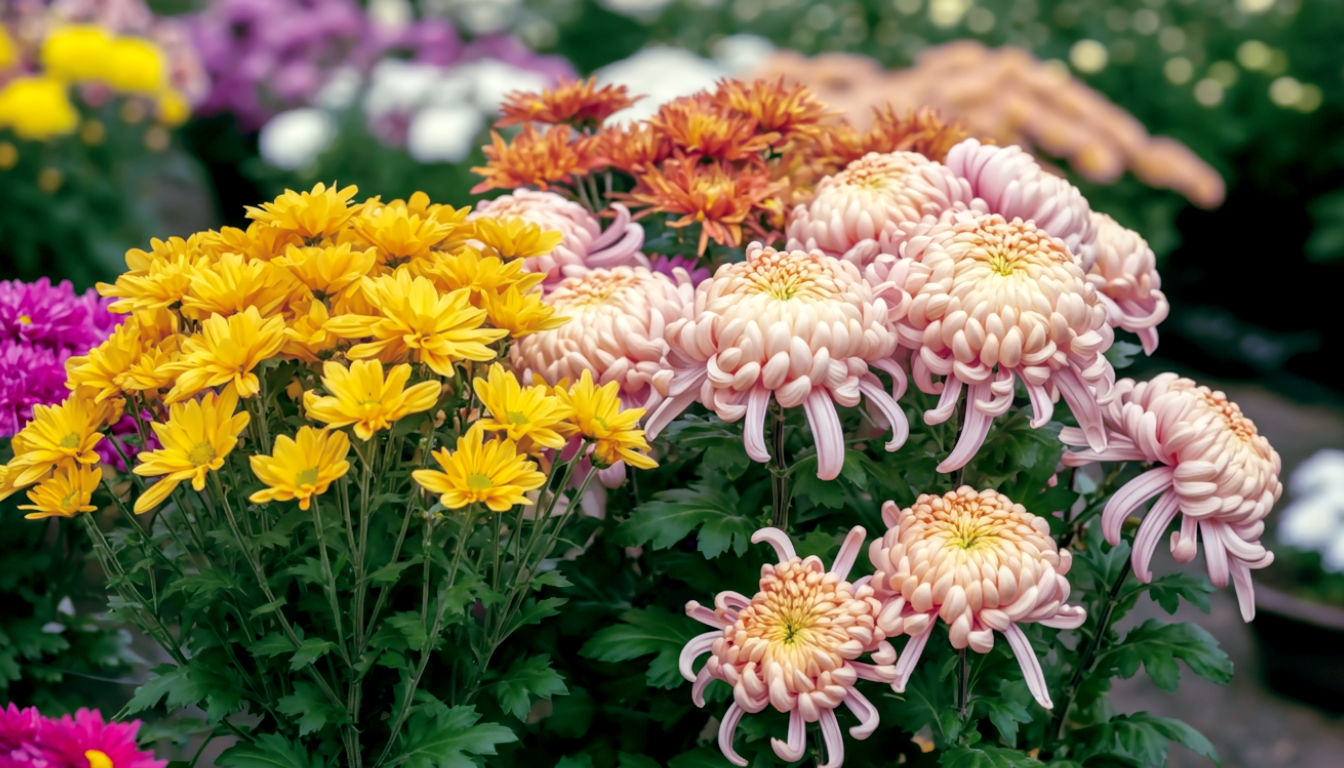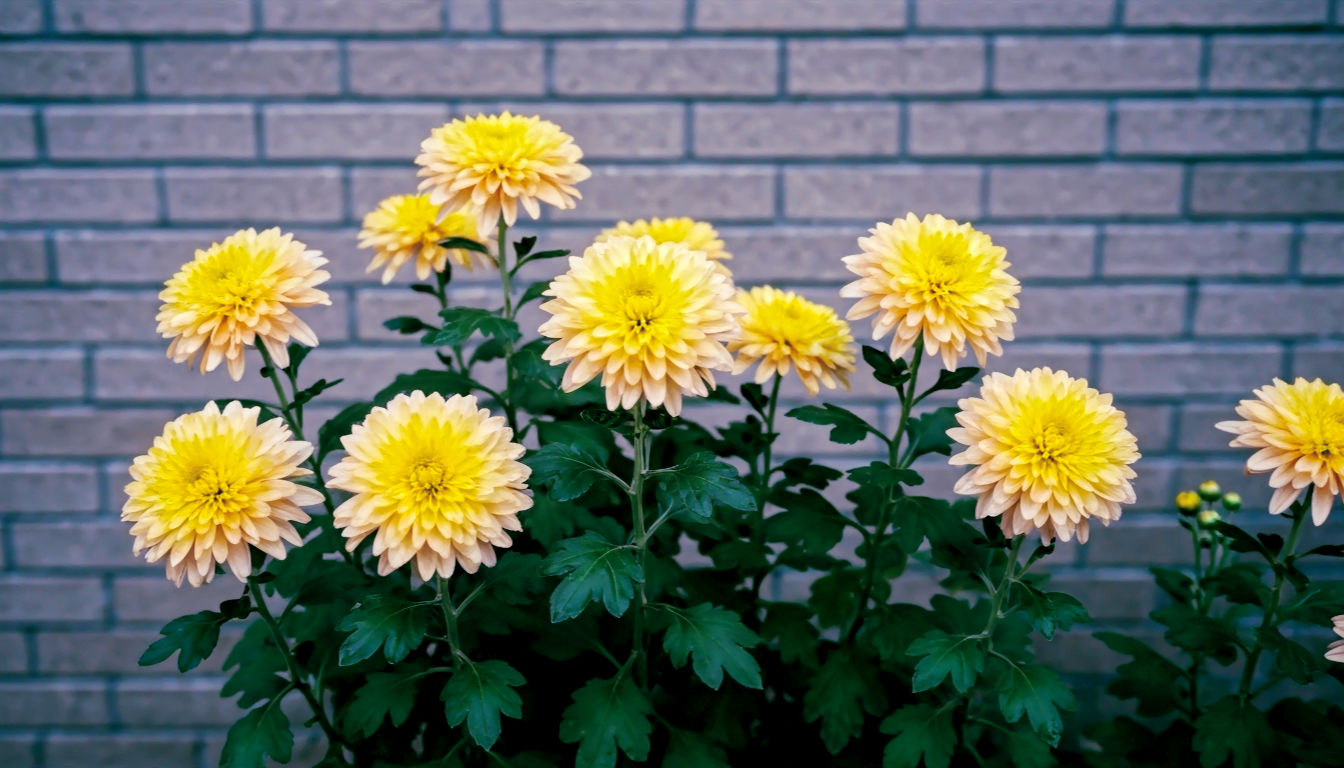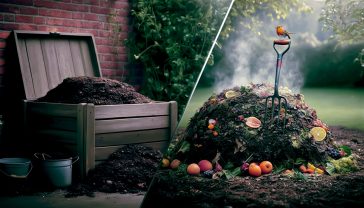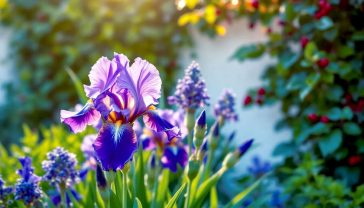Chrysanthemum Chronicles: From Autumn Glow to Horticultural Show
A guide to the chrysanthemum, exploring its journey from ancient China to the heart of British gardens, with practical care tips for every UK gardener.

This post may contain affiliate links. If you make a purchase through these links, we may earn a commission at no additional cost to you.
For many of us in the UK, the chrysanthemum is a classic sign that summer is on its way out and autumn has well and truly arrived. You see them everywhere, from cheerful pots on doorsteps to magnificent displays at garden centres and, of course, the grand, almost architectural blooms at prestigious flower shows. But there’s so much more to this vibrant flower than meets the eye. It’s a plant with a truly global history, rich cultural meaning, and a surprising amount of detail that even the most seasoned gardener might not know.
This isn’t just a simple guide; it’s a deep dive into the fascinating world of chrysanthemums. We’ll journey from their ancient origins in the Far East to their modern-day popularity across Britain, exploring everything from their family ties to the secrets of growing a prize-winning bloom. So, grab a cuppa and settle in as we unravel the colourful chronicles of the chrysanthemum.
What’s in a Name? The Basics of the ‘King of Autumn’
First things first, let’s get to know the plant itself. The name “chrysanthemum” comes from two Greek words: chrysos, meaning ‘gold’, and anthemon, meaning ‘flower’. It’s a fitting name, given that the earliest chrysanthemums were golden-yellow. While they’ve since been bred into a dazzling rainbow of colours—from deep reds and purples to crisp whites and cheerful pinks—the name has stuck.
They belong to the Asteraceae family, which is one of the largest plant families in the world. You might know it better as the daisy, sunflower, or aster family. This explains why some single-flowered chrysanthemums look so much like a classic daisy, with a central disc and radiating petals. What we often think of as a single chrysanthemum flower is actually a whole bunch of tiny flowers, called florets, all clustered together. The outer, ray-like petals are one type of floret, while the little ones in the central disc are another. This clever arrangement is what gives the chrysanthemum its iconic shape.
The Two Main Groups: What You’ll Find at Home
To keep things simple, especially for the British gardener, chrysanthemums are generally split into two main groups:
- Hardy Garden Mums: These are the tough, no-nonsense chrysanthemums that can handle our often-damp and chilly British winters. They’re often shorter, bushier plants with lots of smaller flowers. They’re perfect for adding a splash of late-season colour to borders and containers and will come back year after year. Think of them as the dependable workhorse of the autumn garden.
- Tender Exhibition Mums: These are the superstars, the show-offs. Grown for their spectacular, large, and often intricate blooms, these plants need a bit more protection. They’re usually grown in greenhouses or cold frames to keep them safe from the worst of the weather. These are the ones you see winning rosettes at the National Chrysanthemum Society’s shows, looking like they’ve been sculpted rather than grown.
Knowing the difference is key to getting the most from your plants, whether you’re aiming for a vibrant garden display or a champion show bloom.
An Epic Journey: From Chinese Gardens to British Shores
The story of the chrysanthemum is a long one, stretching back thousands of years. It’s a tale that begins in ancient China and weaves its way across continents, eventually finding a firm home in British gardens and hearts.

The Far Eastern Roots
The chrysanthemum’s story begins in China around the 15th century BC, making it one of the oldest cultivated flowers in human history. The Chinese didn’t just admire its beauty; they saw it as a symbol of longevity and good fortune. They used it in medicine, for food (the petals and leaves are edible), and brewed it as a festive drink. It was so highly valued that it became a motif in art and poetry and was once reserved only for the elite.
From China, the flower travelled to Japan. The Japanese were so taken with it that they adopted it as their national flower. The Imperial Family of Japan, in a move that shows just how revered the flower was, even adopted the chrysanthemum as their official seal. The emperor’s throne is still referred to as the Chrysanthemum Throne today. This is a brilliant example of how a plant can become deeply woven into a country’s culture and identity.
Crossing the Sea to Europe
The chrysanthemum’s journey to the West was a slow and measured one. It was first brought to Europe in the 17th century by Dutch traders, but it didn’t really catch on. It wasn’t until a French merchant named Pierre Blancard brought three different varieties from China to the port of Marseilles in 1789 that the flower began to make its mark on the European continent. From there, it gradually spread to other countries, including the UK.
The British Chrysanthemum Boom
The British horticultural world quickly embraced the chrysanthemum, and it became particularly popular during the Victorian era. Gardeners, with their passion for all things exotic and intricate, began to hybridise the flower, creating the incredible variety of shapes and colours we see today. The invention of the glasshouse and the development of specialised growing techniques allowed British gardeners to cultivate the more delicate, large-flowered varieties, leading to the birth of the chrysanthemum show.
The enthusiasm was so great that the National Chrysanthemum Society was founded in 1868 to promote its cultivation and exhibition. This was a pivotal moment. The Society formalised the classification of blooms, set standards for shows, and brought together a community of dedicated growers. It’s thanks to organisations like this that the tradition of growing and exhibiting chrysanthemums has remained strong in the UK, especially in the North of England, where it’s a cherished hobby for many.
British Culture and the Chrysanthemum
The chrysanthemum holds a special place in the hearts of many British people, even if we don’t always realise it. Its presence is deeply tied to the seasons and to significant moments in our year.
The Face of Autumn
Think of autumn in Britain, and alongside golden leaves and chilly mornings, you’ll probably picture chrysanthemums. They’re the last big hurrah of colour in the garden before winter sets in. While most other flowers have faded away, chrysanthemums are just getting started, providing a much-needed burst of vibrancy in September, October, and even November. This makes them invaluable for adding a final flourish to borders, patios, and hanging baskets.
For many, seeing the first chrysanthemums appear in garden centres is a sign of autumn’s proper arrival—the floral equivalent of putting the heating on for the first time. They’re a cheerful, reliable presence that brightens up the shorter, darker days.
A Symbol of Remembrance
While chrysanthemums are often associated with joy and happiness, they also carry a more sombre meaning. In the UK, particularly, white chrysanthemums are often used in funeral wreaths and arrangements to symbolise sympathy and honour. This isn’t a uniquely British tradition, but it’s a strong one that has made the chrysanthemum a familiar sight in moments of mourning and remembrance. This dual meaning—of both celebration and commemoration—adds a quiet depth to the flower’s character.
A Hobbyist’s Pride: The Allure of the Show Bench
For a dedicated group of enthusiasts across the country, growing chrysanthemums is an art form. The world of chrysanthemum exhibiting is a serious business, and it’s a brilliant example of British horticultural dedication. The goal is to grow a single, perfect bloom of a specific size and form. This requires immense patience and skill, from selecting the right cutting to meticulous feeding and watering, and even “disbudding”—removing all but the single top bud to concentrate the plant’s energy into one massive flower.
The shows, organised by the National Chrysanthemum Society and its regional branches, are where growers display their masterpieces. You’ll find them in village halls and grand exhibition centres, with gardeners from all walks of life competing for prizes. It’s a proper community, full of friendly rivalry and a shared love for the ‘king of autumn’. The quiet sense of pride and accomplishment that comes from placing a perfect bloom on the show bench is a testament to the enduring appeal of this humble-yet-magnificent flower.
Your Guide to Growing Chrysanthemums in the UK
If you’ve been inspired to try your hand at growing these colourful characters, you’re in luck. While some varieties can be a bit fussy, many are remarkably easy to grow and will reward you with a spectacular display. The key is to understand a few basics, especially for the British climate.

Getting Started: Planting and Position
- When to Plant: The best time to plant chrysanthemums in the UK is in late spring, after the last risk of frost has passed. You can buy young plants from garden centres in May and June. If you buy plants later in the summer, you can pop them straight into your garden or a pot for instant colour.
- Where to Plant: Chrysanthemums are sun lovers. They need a spot that gets at least six hours of full sun a day. They’ll also thank you for a sheltered position, as strong winds can damage their stems and flowers.
- Soil: They aren’t too fussy, but they do need a well-drained soil. Waterlogging is the quickest way to kill a chrysanthemum. If you have heavy clay soil, dig in plenty of compost or well-rotted manure to improve drainage. For pots, a good quality, peat-free multi-purpose compost will do the trick.
The Year-Round Care Plan
A bit of simple care will make all the difference to your chrysanthemums. Think of it like this: a little effort now means a big reward later.
- Pinching Out: This is a crucial step if you want a bushy, multi-flowered plant. When your plant is about 15-20cm tall, simply pinch out the growing tip (the top bit) with your thumb and forefinger. This will encourage the plant to produce new side shoots, which will each produce a flower. You can do this a couple of times up until early summer to create a nice, full shape.
- Watering and Feeding: Chrysanthemums are thirsty plants, especially in pots. Water them regularly throughout the summer, but be careful not to overdo it. A good rule of thumb is to check if the top inch of soil is dry before watering again. From the time they start growing until the buds begin to show colour, you can give them a liquid feed every two weeks. A balanced feed with a good ratio of nitrogen, phosphorus, and potassium is perfect.
- Staking and Support: Some of the taller varieties, and certainly the large-flowered exhibition types, will need support to stop them from flopping over. Use a stake or a wire support ring and gently tie the stems to it as they grow. This is especially important as the flower buds get bigger and heavier.
Overwintering Your Garden Mums
Don’t despair when the flowers fade. Many hardy chrysanthemums will happily survive the British winter.
- Tidying Up: After the flowers have finished, simply cut the stems down to about 15cm from the ground. This will keep the plant tidy and help it prepare for the colder months.
- Protecting: In milder areas with well-drained soil, you can leave them be. But if you have heavy, wet soil or live in a very cold part of the UK, it’s a good idea to add a mulch of compost or bark chips around the base of the plant. This will protect the roots from frost.
- Lifting: For extra peace of mind, or for more tender varieties, you can carefully lift the plant in late autumn, shake off the excess soil, and replant it in a pot with fresh compost. Store this pot in a cold greenhouse, shed, or unheated garage. The key is to keep it cool and dry, and only water it very sparingly until spring.
The Common Culprits: Pests and Diseases
Even the toughest of plants can run into trouble. Knowing what to look out for will help you nip any problems in the bud.
- Aphids and Caterpillars: These are the most common pests. Aphids are tiny green or black insects that suck the sap from new growth. You’ll often find them on the undersides of leaves and on the tips of stems. Caterpillars, on the other hand, will munch on the leaves, leaving holes.
- Solution: For aphids, a simple spray of soapy water or a blast with a hosepipe will often do the trick. You can also use a biological control like ladybirds, which love to eat them. Caterpillars can be picked off by hand.
- Powdery Mildew: This is a fungal disease that looks like a white, powdery coating on the leaves. It’s often caused by poor air circulation.
- Solution: Make sure you don’t overcrowd your plants and that they have plenty of space between them. If you see it, remove the affected leaves and dispose of them (don’t put them on the compost heap). You can use a fungicide if it’s a persistent problem.
- Rust: This fungal disease shows up as little orange or brown pustules on the undersides of the leaves. It can spread quickly and is a serious threat to show-quality plants.
- Solution: Good garden hygiene is key. Remove any affected leaves and clean up any fallen debris. Avoid overhead watering, as this can help the fungus to spread.
The Art of Arrangement: Tips for Cut Flowers
Chrysanthemums aren’t just for the garden; they’re one of the best cut flowers you can get. They last for ages in a vase and make a superb centrepiece.
- Cutting: The best time to cut a stem is when the flowers are about a quarter to a half open. Cut the stem at a 45-degree angle using a clean, sharp knife.
- Preparation: Once you’ve cut them, immediately put the stems into a bucket of water. This stops air from getting into the stems, which can block water uptake. Before putting them in a vase, remove any leaves that will be below the waterline. This is super important because it stops the leaves from rotting, which creates bacteria that will make your flowers wilt.
- Vase Life: To get the most from your bouquet, use a clean vase with fresh water and add a sachet of flower food. Keep the vase in a cool spot away from direct sunlight, drafts, and ripening fruit. Fruit gives off a gas called ethylene, which makes flowers age faster.
The Future of the Chrysanthemum
The world of chrysanthemums is constantly evolving. Plant breeders are always working on new varieties, creating stunning new colours, shapes, and forms. There’s a big push towards developing more disease-resistant and hardy varieties that are even easier for the average British gardener to grow.
There’s also a growing interest in using chrysanthemums more creatively. While they’ve long been a staple of traditional arrangements, you’re now seeing them used in more modern, minimalist floral designs. They’re also being rediscovered for their edible properties, with some chefs using them in salads and teas.
So, whether you’re a seasoned grower, a new gardener, or just someone who appreciates a pop of colour on a chilly autumn day, the chrysanthemum is a flower with a story that’s still being written. It’s a testament to its beauty, its resilience, and its enduring appeal.
Further Reading
- The National Chrysanthemum Society (NCS): The ultimate resource for UK growers, with guides, show information, and details on how to get involved.
- The Royal Horticultural Society (RHS): A definitive guide to cultivating chrysanthemums in the British climate, with detailed plant profiles and care advice.
- Gardener’s World Magazine: A great source of practical, UK-focused gardening tips and inspiration, often featuring articles on seasonal plants like chrysanthemums.






